A garden buzzing with bees, butterflies, and other pollinators is not only beautiful but also essential for a healthy ecosystem. By planting the right flowers, you can support these important creatures while enjoying a vibrant, colorful outdoor space.
In this article, we’ve rounded up 20 stunning plants that attract bees and butterflies. From nectar-rich wildflowers to fragrant herbs and long-blooming perennials, these plants will turn your garden into a pollinator paradise. Whether you have a small balcony or a sprawling backyard, these selections will help boost biodiversity and keep your plants thriving!
Lavender
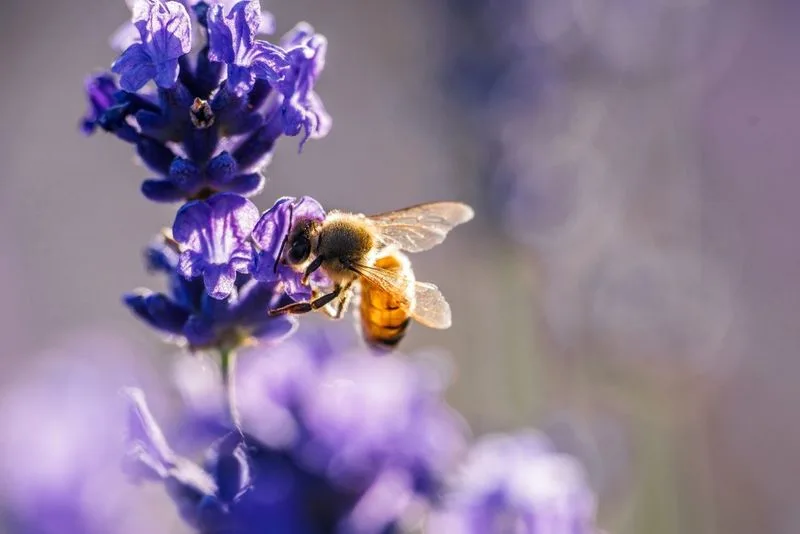
Lavender’s aromatic blooms are more than a sensory delight; they are a beacon for bees and butterflies. With spikes of purple flowers, this Mediterranean native thrives in sunny spots with well-drained soil. Its perennial nature ensures a long-lasting impact in your garden, drawing in pollinators from early summer through fall. Prune it regularly to maintain its shape and encourage more blooms. Lavender not only beautifies but also provides a classic fragrance, making it a garden staple.
Coneflower

Coneflowers, also known as Echinacea, offer a striking appearance with their drooping petals and prominent central cone. These hardy perennials are adored by bees and butterflies alike, providing nectar throughout the summer. Plant them in well-drained soil under full sun to see them flourish. They require minimal care, making them ideal for both seasoned gardeners and novices. Beyond their attractiveness to pollinators, coneflowers are renowned for their medicinal properties, adding an extra dimension to their garden appeal.
Butterfly Bush

The butterfly bush lives up to its name, attracting butterflies with its abundant clusters of flowers. These shrubs flourish in sunny areas and can reach impressive heights, creating a focal point in your garden. Their long blooming season stretches from summer to fall, offering continuous nectar for visiting pollinators. Regular deadheading will promote new blooms and maintain its vitality. This fast-growing bush requires little maintenance, providing beauty and ecological benefits with ease.
Bee Balm

Bee balm’s vibrant hues and aromatic scent make it irresistible to bees and butterflies. This perennial thrives in sunny to partially shaded areas, needing rich, moist soil to prosper. Its tubular flowers are perfect for pollinators, offering nectar from early summer to late summer. Regular deadheading encourages fresh blooms, keeping your garden lively. Its aromatic leaves can be used for making herbal teas, adding another layer of utility to this garden favorite.
Zinnia
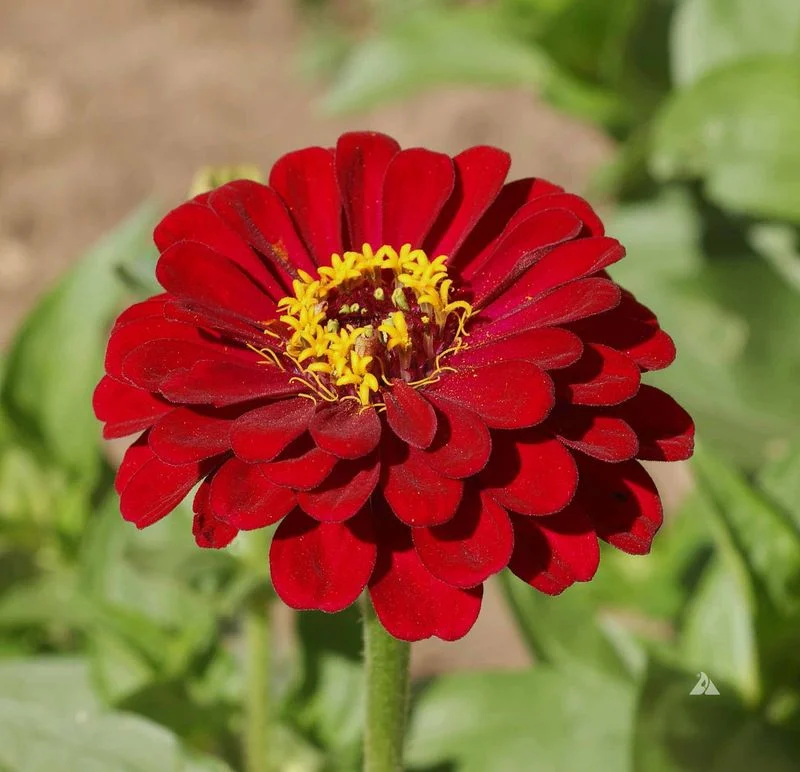
Zinnias are a gardener’s delight with their wide array of colors and ability to attract butterflies. These annuals thrive in sunny spots and well-drained soil, blooming profusely from summer until the first frost. Their diverse forms and hues make them versatile, fitting well into any garden scheme. Deadheading spent flowers will prolong their blooming period, ensuring a constant supply of nectar. Zinnias’ ease of care combined with their vibrant appearance makes them a must-have for butterfly enthusiasts.
Sunflower
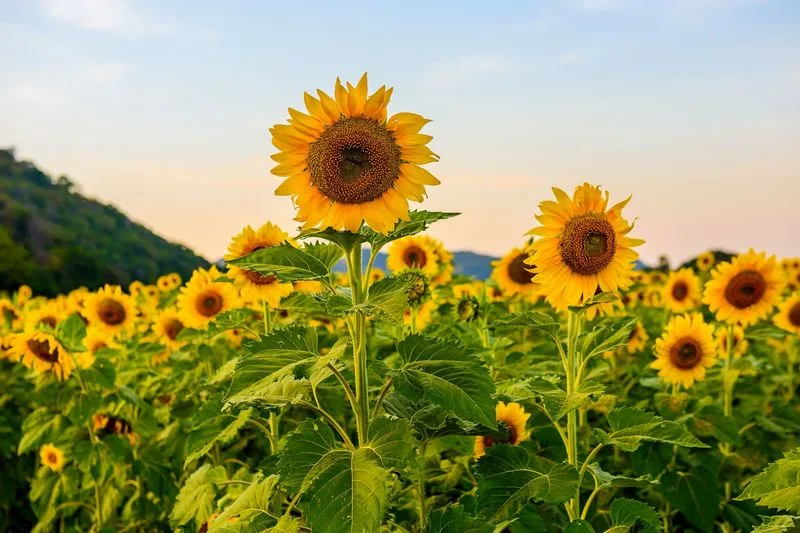
Sunflowers are synonymous with summer, standing tall as one of the best plants for attracting pollinators. Their large, sunny faces provide ample landing space for bees and butterflies seeking nectar. These annuals are easy to grow in sunny positions with well-draining soil. They also offer seeds for birds, adding more biodiversity to your garden. Though they have a short blooming period, their striking presence and ecological benefits make sunflowers a joyful addition to any outdoor space.
Milkweed

Milkweed is essential for monarch butterflies, providing both nectar and a place to lay eggs. Its clusters of pink, orange, or white flowers bloom in summer, attracting various pollinators. This perennial is easy to grow in well-drained soil and full sun, requiring little maintenance once established. Milkweed’s importance to the monarch lifecycle enhances its value, making it a critical addition to pollinator-friendly gardens. Its robust nature ensures it will thrive with minimal intervention.
Salvia

Salvia’s vibrant spikes are a magnet for bees and butterflies, offering a feast of nectar. These perennials or annuals, depending on the variety, thrive in sunny, well-drained locations. Their long blooming season, from late spring to autumn, ensures a constant attraction for pollinators. Pruning after the first bloom encourages a second flowering, maximizing their appeal. Salvia’s resilience and range of colors make them a versatile choice for enhancing garden biodiversity.
Borage

The star-shaped blue flowers of borage are an excellent source of nectar for pollinators. This hardy annual is easy to grow, preferring full sun and well-drained soil. Its prickly stems and leaves add texture to the garden, while its continuous blooms provide nourishment from spring to fall. Borage is also edible, with leaves that taste like cucumber, offering culinary uses alongside its ecological benefits. Its ability to reseed itself ensures it returns yearly, enhancing garden vitality.
Lantana
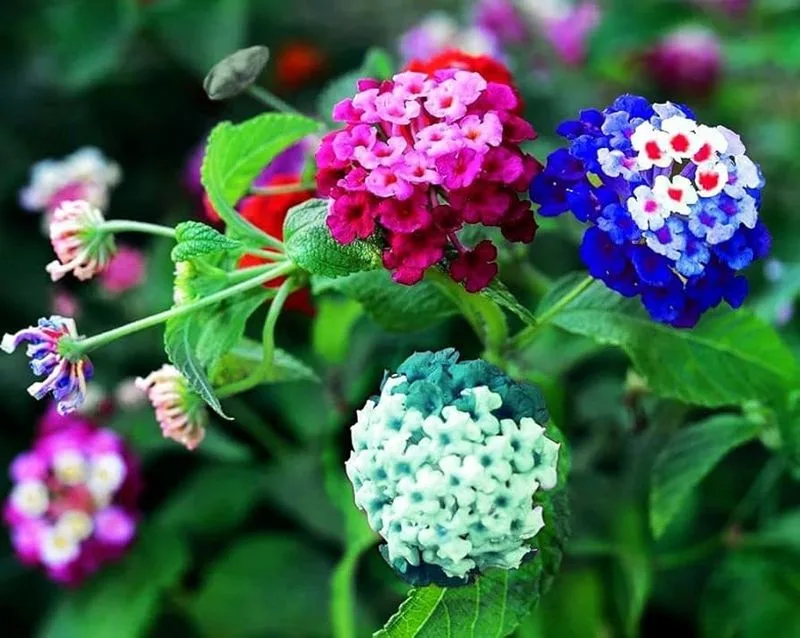
Lantana’s bright, multi-colored flowers are a feast for the eyes and a favorite for butterflies. This shrub thrives in warm climates with plenty of sunlight, offering blooms from spring to fall. Its drought resistance and low maintenance needs make lantana an excellent choice for busy gardeners. By providing nectar-rich flowers, lantana supports pollinators while adding a splash of color to your garden. Regular pruning will keep it looking tidy and encourage more blooms.
Aster
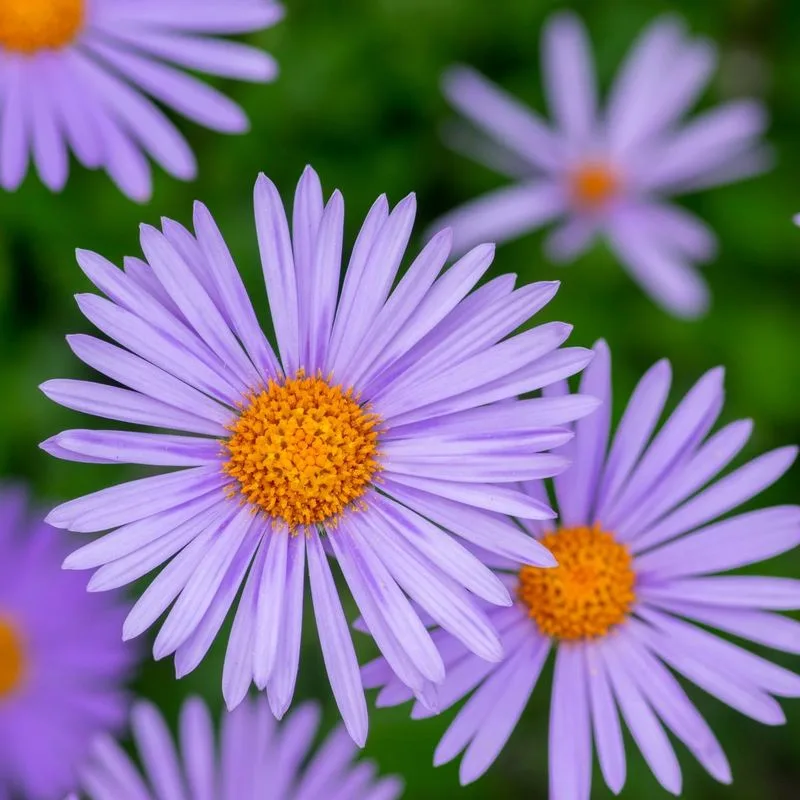
Asters bring late-season color to gardens, blooming from late summer to fall. Their daisy-like flowers are highly attractive to bees and butterflies, offering a crucial nectar source before winter. These perennials thrive in sunny or partially shaded spots with average soil. They are relatively low-maintenance, requiring division every few years to prevent overcrowding. Asters not only contribute to garden aesthetics but also support pollinator populations at a critical time of year.
Cosmos
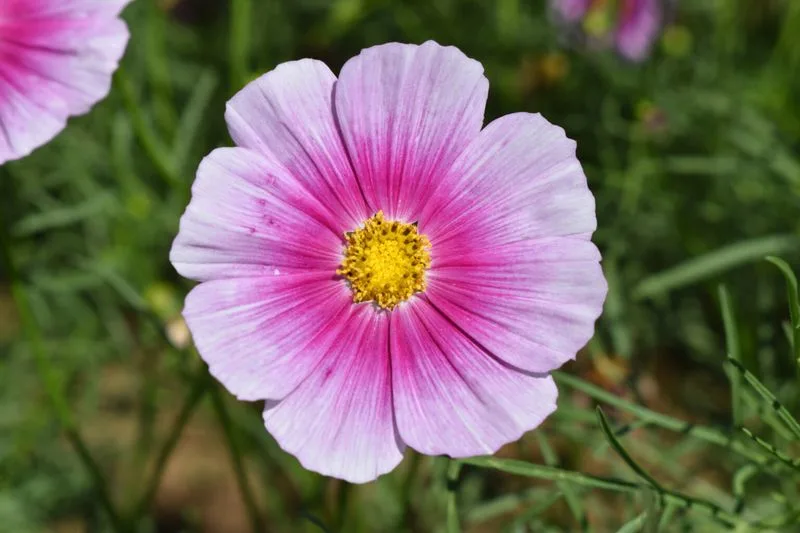
Cosmos flowers are a charming addition to any garden, offering an open invitation to butterflies. These annuals flourish in full sun and well-drained soil, blooming from mid-summer to fall. Their delicate, feathery foliage adds texture, while their blooms provide a prolonged nectar source. Deadheading encourages more flowers, ensuring continuous attraction for pollinators. Cosmos are easy to grow from seed, providing a budget-friendly option for enhancing garden biodiversity.
Black-eyed Susan
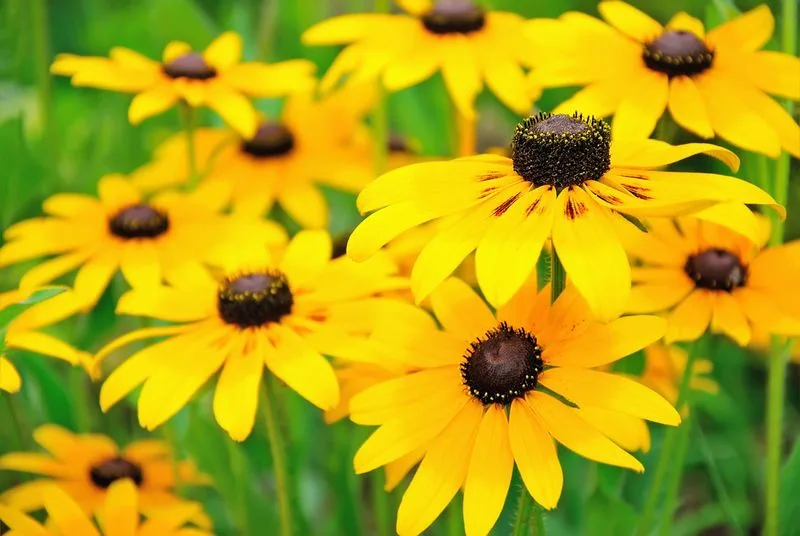
Black-eyed Susans are a bold addition to gardens, known for their bright yellow petals and dark centers. These perennials flourish in sunny spots and well-drained soil, attracting bees and butterflies throughout the summer. Their hardy nature and drought tolerance make them ideal for various climates. Regular deadheading will promote continued flowering, keeping your garden lively. Black-eyed Susans add vibrant color and ecological value, supporting pollinators effortlessly.
Coreopsis
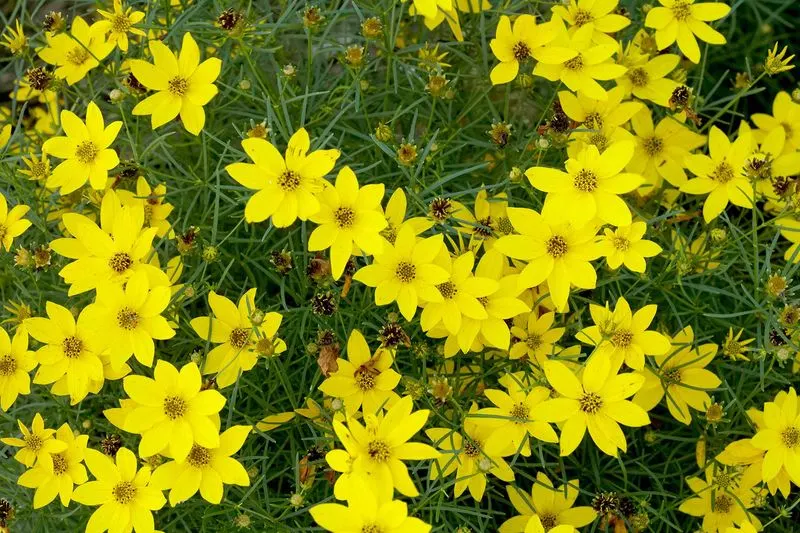
Coreopsis, with its sunny disposition and profusion of blooms, is a favorite among pollinators. These perennials thrive in full sun and well-drained soil, offering a resilient option for garden enthusiasts. Their long blooming period extends from late spring to late summer, providing a steady nectar source. Minimal maintenance and drought tolerance make coreopsis an easy choice for busy gardeners. Their cheerful appearance and ecological benefits enhance garden landscapes beautifully.
Phlox
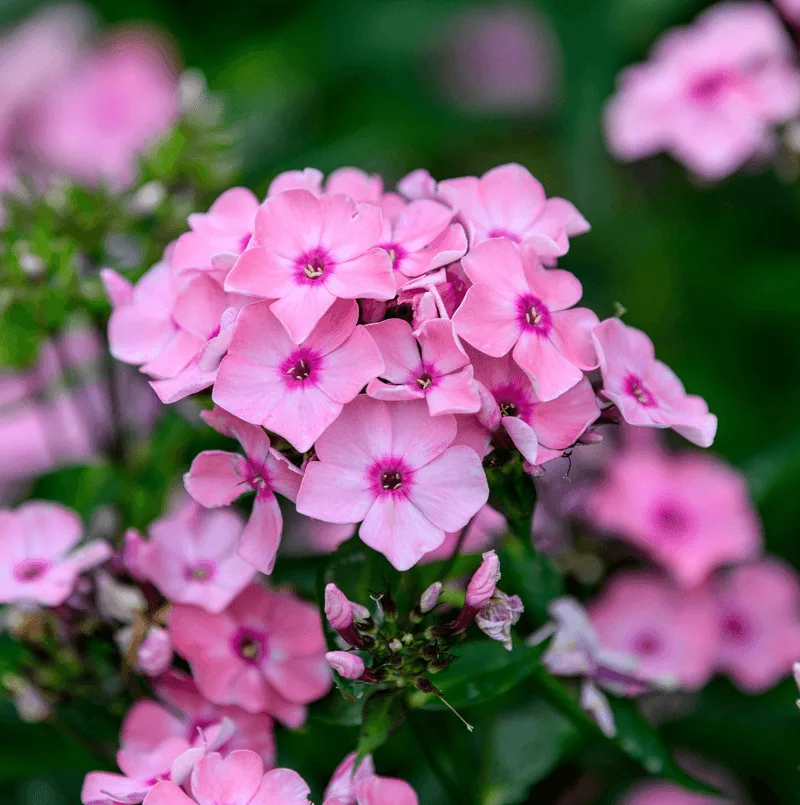
Phlox provides a profusion of blooms that beckon bees and butterflies. These perennials thrive in sunny or partially shaded areas with rich, well-drained soil. Blooming from mid-summer to late fall, they offer a continuous nectar source for pollinators. Regular deadheading encourages more flowers, maintaining their appeal. Phlox’s fragrant blooms and diverse colors make them a versatile choice for any garden, enhancing both beauty and biodiversity.
Goldenrod

Goldenrod’s tall plumes of yellow flowers are a familiar sight in late summer and fall. Contrary to misconceptions, it doesn’t cause allergies and is a valuable nectar source for bees and butterflies. This perennial thrives in sunny spots with average soil, requiring minimal maintenance. Its robust nature and vibrant color add to the garden’s diversity. Goldenrod supports pollinator activity when other flowers fade, ensuring your garden remains a thriving ecosystem.
Verbena
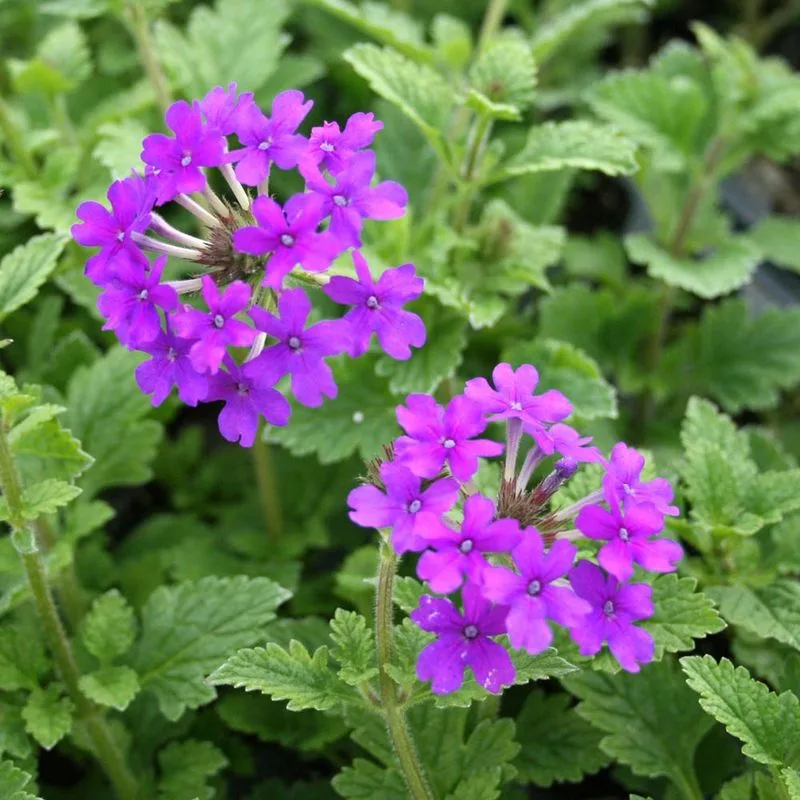
Verbena’s cascading blooms are a delightful addition to any garden, known for attracting a host of butterflies. These annuals or perennials, depending on the climate, thrive in sunny, well-drained areas. Their extended blooming period runs from spring to the first frost, providing a reliable nectar source. Regular deadheading encourages continued flowering, enhancing its ornamental appeal. Verbena’s adaptability and charm make it a versatile choice for enhancing pollinator gardens.
Catmint
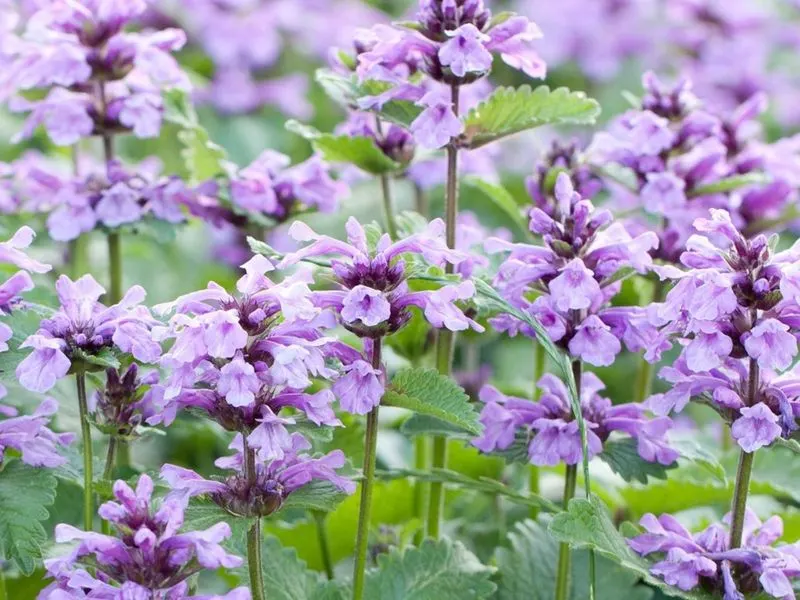
Catmint’s silvery foliage and lavender-blue flowers are irresistible to bees and butterflies. This perennial thrives in sunny locations with well-drained soil, offering resilience and beauty. Blooming from late spring to early fall, it provides continuous nectar for pollinators. Regular pruning will encourage bushy growth and more blooms. Catmint’s easy care and attractive appearance make it a valuable addition to pollinator-friendly gardens, enhancing both aesthetics and ecological health.
Hollyhock
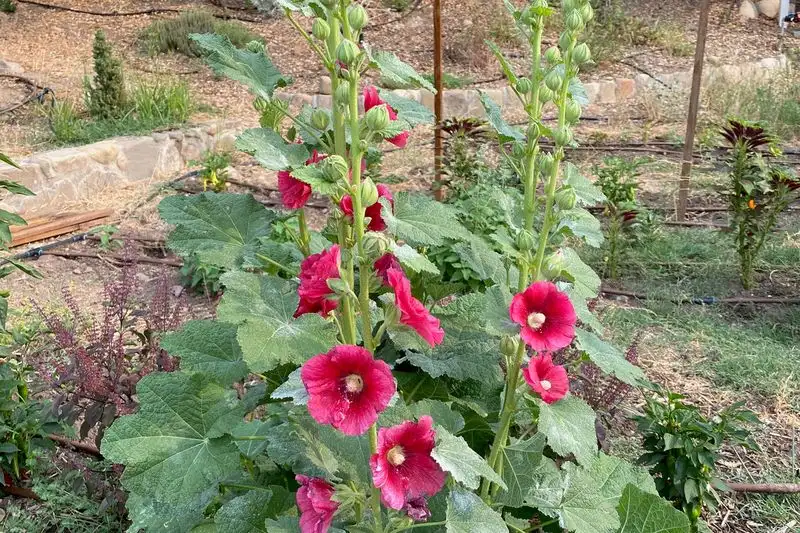
Hollyhocks, with their towering spikes of flowers, create a dramatic backdrop in gardens. These biennials or short-lived perennials thrive in sunny positions with well-drained soil. Blooming from mid-summer to early fall, they offer nectar-rich flowers that entice bees and butterflies. Their tall stature makes them ideal for borders or against walls, adding vertical interest to garden designs. Hollyhocks require moderate care, rewarding gardeners with their impressive blooms and pollinator appeal.
Snapdragon
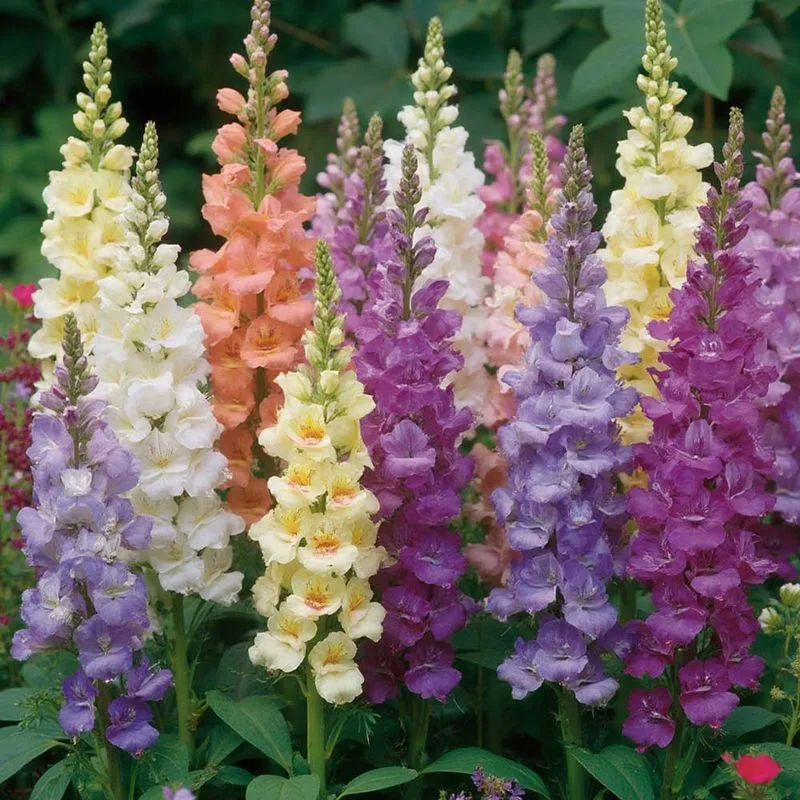
Snapdragons bring a playful element to gardens with their unique, dragon-like blooms. These annuals flourish in sunny spots with well-drained soil, offering a splash of color from spring to fall. Their tall flower spikes are particularly attractive to butterflies, providing a valuable nectar source. Pinching back early growth encourages bushier plants and more blooms. Snapdragons’ cheerful appearance and ease of care make them a delightful addition to pollinator-friendly spaces.

